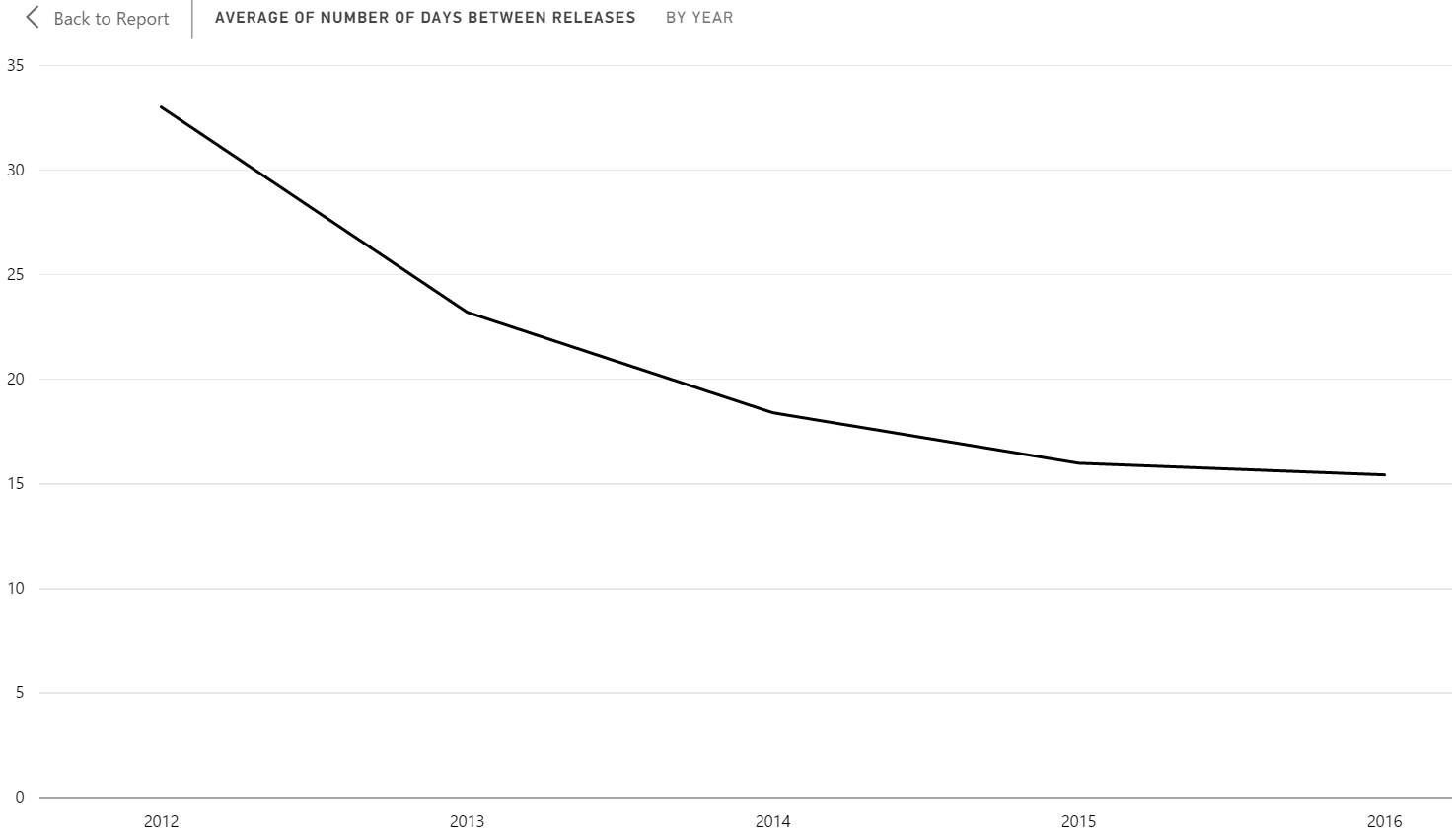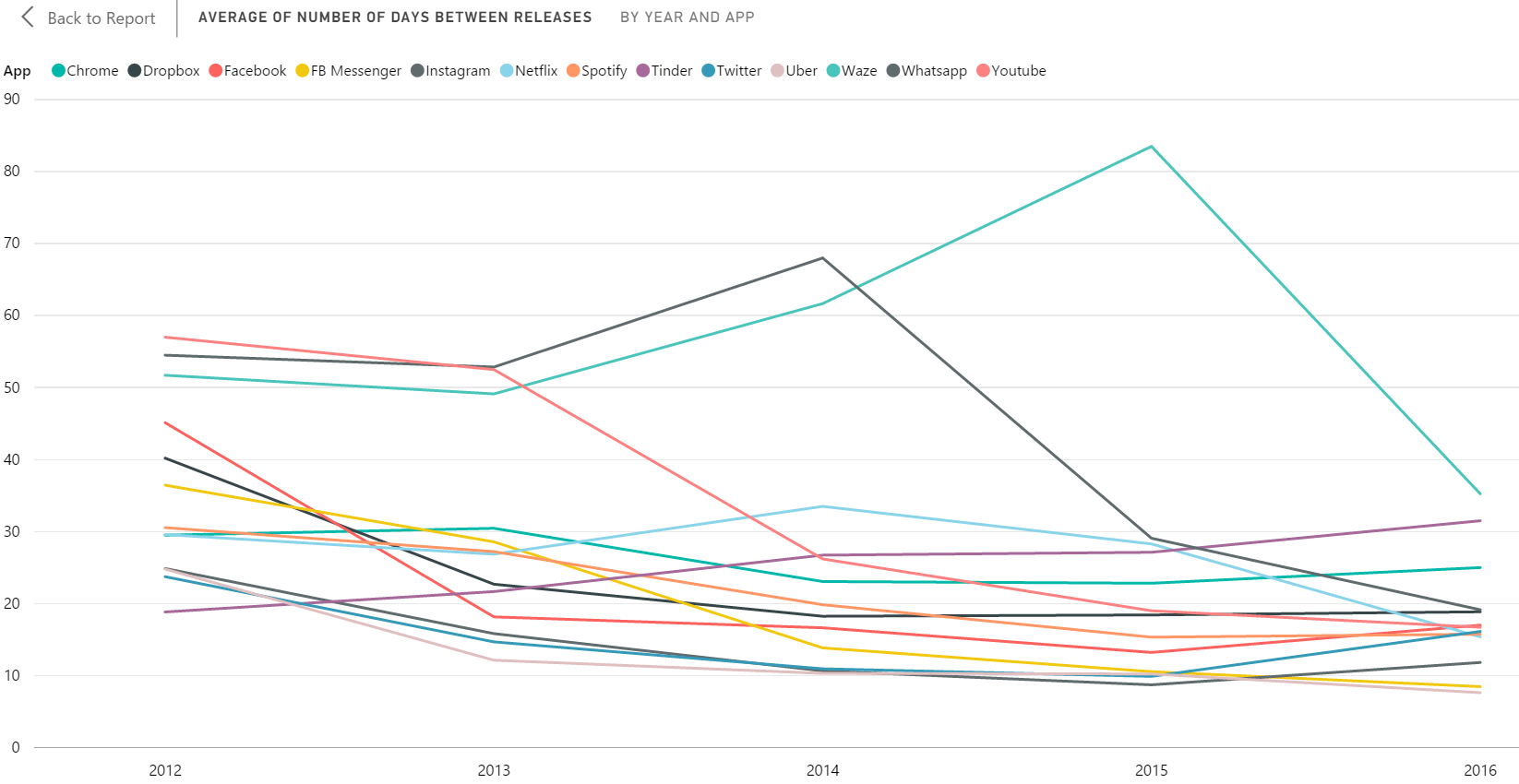Do you pay attention to the updates on your iphone? Have you noticed a trend? The Uber app having an update a week, and Instagram, and Facebook messenger? Those are a few stand out from the random check I did using app store release data last week (See graphs above, iOS data from AppAnnie).
The ubiquitous App developper
Today, building and managing an app becomes more and more hairy:
You need Analytics to follow your user behavior, you need Attribution to know where they come from, you need Push notification, and then you need all those systems to function well together.
You also need to keep as much OS parity as possible, so that iOS users and Android users can both benefit from the same awesome features you are building into the app.
You also need to keep up with the yearly OS updates, test out different versions of your funnel in order to optimize the user experience and monetization.
All this while innovating and developing your product.
As you can see, these are a lot of balls in the air at the same time. And executing well on all these aspects will determine the success or the failure of your company. Don’t get me wrong, some companies manage it very well, but this is at the cost of large product and engineering teams, working like there is no tomorrow.
The app is the App store’s worse enemy
Let’s step away and look at the bigger picture: App updates on iOS are more frequent. The reasons are listed above: Everything you need to tweak, fix, everything you want to test, everything needs to go through a full release. You release it to everyone (of course, you can do some testflight, but this is often limited to a small subset of internal users), see if the problem is fixed / the flow improved / the conversion rate raised, then you define what needs to happen on the next sprint.
Let’s think about the user for a little bit: How do you feel when you see a new Uber (Facebook messenger / Instagram) update in your list of app updates? Didn’t they already update the app last week? What else do they need to change?!? How much bandwidth is consumed every day for the sake of keeping the app functioning to its best? How much money are cellular operators making every year thanks to the heavy data consumption of app updates? Is this really sustainable? Where do we go from there?
Some of those issues have been addressed in a pretty good way by Android. Allowing staged release (Let’s release the new version to 1% – 5% – 15% of users) is a great way for any app developer to test out the updated version of the app without bothering everyone. You check the bug you had identified is fixed, you make sure the conversion rate you were hoping to improve actually goes up, then you release to the whole world. This is a very good option, but the only difference with what Apple is doing is that you will have less releases with bugs that need to be released again the following week. Otherwise, for every edit, change in the app, you still need to do a release.
Let me tell you a bot
Facebook had an awesome early success with the first app store, the desktop version on Facebook. They grew a lot by allowing developers to create new FB apps, place them on the store and users get to discover these apps and enrich their overall FB experience with great new content, games and features. Since then, the concept has been used by Apple at a totally different scale and with amazing monetary success. The other OSs followed suite. This is the new norm. But with the FB app store, there was no update issue. There was only one platform. Nothing needed to be downloaded on one device, all updates could be done in the background in a seamless way.
Well guess what? Facebook is back at it, and leading the innovation. You must have heard the phrase: “No UI is the new UI”? This expression usually applies when talking about a Bot experience. Imagine that to order your Uber today in the US, you mainly only need Facebook messenger on your device and you can start “talking” to the service and a car comes and pick you up in a few minutes.
Bots are those automated smart systems that can answer the user through a messenger like experience and provide similar services as the app currently does. Facebook released last month their Bot technology for the messenger platform and is declaring a war to the app stores. Let me explain:
The messenger/bot experience is going to be a much uniform experience. This sounds like a tough piece to swallow for the brands out there. My brand can be cool by being the first to offer its services with a bot, but once all my competitors do the same, how do I remain the coolest? The app I have been working on for so long easily conveys my coolness, with my nice colors, flat design, and seamless user experience. How can I do that through a messenger service? While I don’t have an answer to this question, it is evident to me that companies will probably all jump on the bandwagon.
A future without apps
Imagine: Developers don’t have to build an interface anymore. They don’t have to deal with different OSs nor release cycles. They can deploy extra functionalities and roll them back if there is an issue in a matter of seconds without impacting the user experience, without over-loading data networks by millions of app updates.
The math is simple: App developers will rapidly embrace bots and the users will love the more streamlined easy light experience.
But what happens then to app store revenues ?


